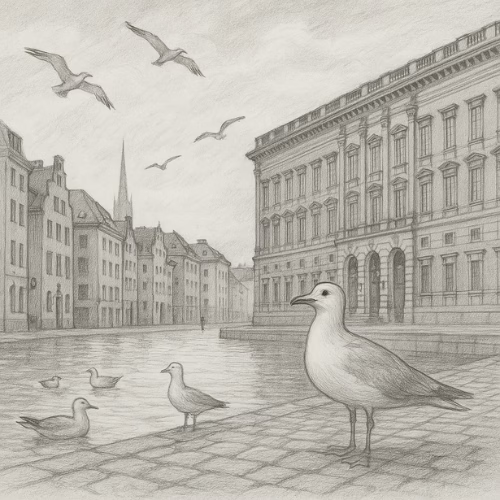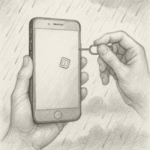Morning arrived in Stockholm with the gentle sound of the “Sea of Birds” — that’s what I call the place where gulls and swans gather, floating calmly between the city’s old piers and sleek ferries. I walked slowly through the oldest corners of the Old Town, marveling at the city’s quiet dignity. It’s impressive how in the 18th century Sweden already had a sense of urban planning that feels modern even today — everything laid out in neat, organized blocks. The architecture reminded me of Italy in its simplicity, and sometimes of Germany in its precision, though Italy somehow felt more humble in comparison. Beyond the Old Town, the new city opened up after a small bridge, and though everything there was just as clean and orderly, it didn’t leave as deep an impression on me.
Everywhere in Scandinavia, the banks and services look almost identical, a seamless extension of each other. In Stockholm, I even stumbled upon products my old company used to export, now sold easily here when they were hard to find back home. Maybe it’s the price; Swedes seem willing to pay more for things I once took for granted.
I captured this city with my old Sony Ericsson W660 phone, a device that’s been with me since my third year of university. Over twenty years have passed, and yet it still works — and so do my memories. Through that blurry lens, I sent images and videos to the first person who ever stirred my heart, telling them of this solitary journey, this city we once dreamed of visiting together in search of fragile happiness.
Back at the hostel, I met an old man sitting alone in the common room. I greeted him and sat down, surprised at how warm and refined his English was. He told me he had a Thai wife and had lived in Thailand for seven years but didn’t want to stay in Sweden because of the harsh winters. Then he turned the conversation to Finland — our quiet, peculiar neighbor. He found Finns so hard to understand, so closed off, like wooden poles that refused to bend. He couldn’t imagine why any foreigner would choose to live there, where the culture felt too silent, too reluctant to reveal itself.
We talked about SEK coins and the small trinkets sold in the Royal Palace gift shops. He was especially generous in his praise for Swedish seafood, especially the famous crabs. Before we parted, he told me something I hadn’t known: there was once a Swedish king who cost less than an entire government ministry. He meant King Gustav — Gustav V, if I remember correctly, who reigned around 1907 to 1950. This king apparently handled foreign relations himself, forging alliances and opening trade doors for Sweden. The Swedish people, he said, loved him dearly.
Hearing that, my heart felt a small ache. I thought of the monarchs in my own country — wiped out completely, their lineage vanished, while around the world only a handful of thrones remain. Many call them relics, unneeded symbols. But in that moment, I understood that a monarch, if loved by the people, can become a bridge — a symbol of a nation’s soul, a diplomatic figure who wins the goodwill of others simply by being there, a bridge between hearts that no treaty can build.
I said goodbye to the old man, carrying his words and my own quiet thoughts as I prepared to leave Sweden behind the day after tomorrow. Of course, I’ll return someday…but I don’t know when.



